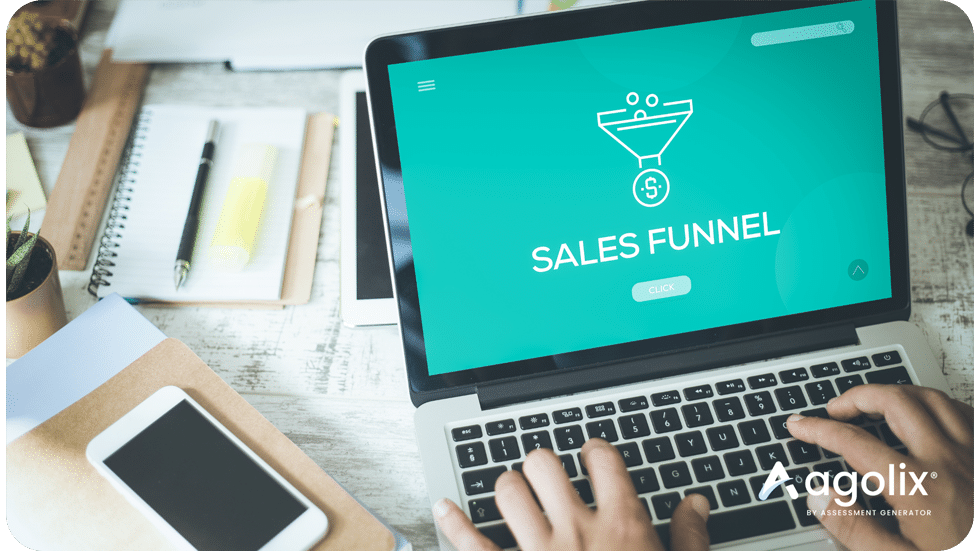Create an exciting and engaging assessment with Agolix!
An assessment tool can be used at each step of the sales process since it’s so versatile and engaging.
You can design assessments that evaluate specific situations and guide prospects through a customized line of inquiry using their answers to previous questions. This entire process improves the prospect’s understanding of the problem they face and the solution(s) they need.
Here’s how to leverage an assessment tool at each step of the sales process:
Top of the Funnel
At the very top of the funnel, you can use assessments to identify pains and determine where they exist. Are these issues:
- Organizational?
- Technological?
- Financial?
Your prospect can clarify the problem and its impact on:
- Their industry
- Their business
- Their own customers
- Management
- Staff
These answers will help prospects gauge the severity of consequences in case they choose not to act.
Moreover, you can also typically determine how the shift in status quo or priorities came about for the prospect to actively seek out a solution.
For instance, the prospect’s business might be trying to do something beyond their core competencies. In case of a financial crunch, they may be looking for ways to do more with less. They might be flattening out the hierarchy through a management shake-up or their industry might be facing disruption because of new technologies.
They might need an innovative and outside-the-box solution that they don’t have the internal resources to work out and execute.

Middle of the Funnel
Assessment tools are just as useful in the middle of the sales funnel where the lead starts to list down possible solutions and lock down the ones they think are the best. Here, a value calculator may also come into play.
By now, leads have a fair idea of which elements are needed to solve their problem and have come up with a ballpark price through their research. At this point, they want to find out if the solution on offer is worth its price and what their next steps should be.
You can also design your assessment to provide a series of questions that show the buyers the value they will receive from your solutions. Alternatively, you can use it to narrow down the list of requirements to solve a particular problem which will help guide future product changes.
Now that you know the value buyers expect from your type of solution and have information on solutions under consideration, you can create customer-specific offerings which best fit each individual buyer.
Bottom of the Funnel
When buyers reach this stage, they are ready to choose from a final short list of companies and solutions.
They are completely aware of the problem they face and how your offering can help them solve it. They can accurately map the way from their current situation to a desired future outcome by working with the specifics relevant to their problem.
Before making their final purchase, they’ll want to know the return on investment and total cost of ownership and related information.
You can use an assessment tool along with ROI and TCO calculators to create a visual representation of the new process.
Have questions? Reach out to Agolix for answers.

